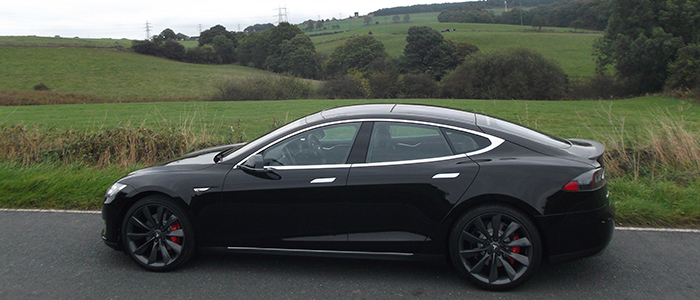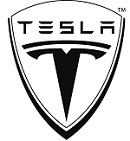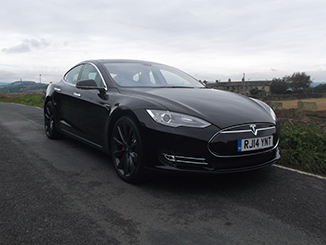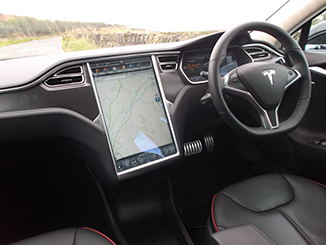Tesla Model S P85


We drove the Model S briefly earlier in the year; it was a left-hand drive, German registered car. Overall we thought it was a wonderful bit of kit, but will living with one for a week leave the same feeling?
During the time we had the car, we dropped in at a local school, Highburton First near Huddersfield to see what year 5 thought of the Tesla. These children are aged 9 to 10 and are the future as is this type of car. They used all sorts of words to describe it: epic, amazing, fantastic, superb, stunning, gorgeous, brilliant, nice and black. Most of the words to describe will be similar to those used by adults too, as it is all of those words, and more besides.
Everywhere you go in the Tesla, people stare, and it really is an eye catcher. If you park it anywhere people ask what is it, who makes it, where is it made, there is general interest in such an unusual and pretty looking car. It was described by somebody as half-way between a Maserati, Jaguar XF and a Porsche Panamera, and it probably does use some of the best features from all of those.

The body is mainly aluminium, with reinforced, high strength baron steel elements, making it lightweight, yet very strong.
The Model S is a large five-seat hatch, measuring 4,970mm, making it about the same size as a BMW 5 Series which is 4,907mm, an Audi A6 at 4,933mm or Ford Mondeo at 4,871mm. You can also order two fairly small rear facing seats in the boot, only really large enough for two small children, but a nice option to offer.
There is a choice of battery packs and motor powers for the Model S. The battery packs are either 60KWh or 85kWh. These are offered with 3 different motor performance outputs, the 60kWh battery can be taken with a 285kW motor that accelerates from 0-60 in 5.9 seconds, has a top speed of 120mph and an estimated range of 230 miles at 55mph. The 85kWh battery has two motor options, a 285kW version that accelerates from 0-60 in 5.4 seconds, has a speed of 125mph and estimated range of 300 miles. The other option is the Performance version which uses a 350kW motor. This sees the 0-60 acceleration time reduce to a very impressive 4.2 seconds, the top speed increases to 130 mph and the range at 55mph stays the same at 300 miles.
It is the home charging that causes issues if you are not set up for it. If you don’t have the EV wall box with the higher current option it takes a very long time to charge; at around 10 amps the charge rate gives you approximately 5 miles per hour of charging which equates to over 2 days to charge fully from virtually empty. Also if you don’t have the wall box you have to run the cable through your front door or under the garage door due to the size of the plug on the charging lead. So you would definitely have to have a wall box added.

To speed the charging up we decided to take the Tesla to a charging station. The nearest one was at the services on the M1 near Wakefield; this was a 12 mile drive. There was no one using it when we got there so we plugged it in and used the Ecotricity which came with the car. We sat in the services for 1.5 hours waiting for it to charge up. This increased the range by 90 miles. But by the time we got home it had taken over two hours and the range was back down to 66 miles. When you think that you can take a petrol or diesel car to the local filling station and pump in enough fuel to give you a 500 mile range all within 15 minutes it makes the EV option look hard work, but on the plus side we didn’t pay for the electricity at the charge point, whereas we would have spent around £60 at the filling station.
Tesla are planning to introduce more “Super-Charger” stations up and down the country that will charge an empty battery to half full in 20 mins, but the three nearest to us according to the on-board computer were Birmingham, Canary Wharf and Amsterdam. While that could prove useful to anyone in London, Birmingham or Amsterdam, it was sadly not much help to us. When more become available it will be much more practical and useable, but until then it is a bit of a slow process. The home wall box charges at a rate of up to 68 miles per hour, which appears to be the best option for now.

The Model S is a fantastic car to drive, so quick and so sure-footed, the power is incredible, and it just keeps going, no lag or any signs it is running out of power, simply unbelievable.
The huge 17” screen in the centre of the dash operates just about everything in the car; there are hardly any buttons or switches anywhere. The touch-screen that is so easy to use is intuitive and works really well. It was funny as the kids at school thought it was very normal, and wondered why more cars don’t have a large touchscreen, whereas adults thought it very strange and futuristic. Just a sign of the generation gap I suppose…
The warranty that Tesla offer is very comprehensive with a standard 4 years or 50,000 mile on all components plus 8 years or 125,000 mile warranty on the battery and drive components on the 60kWh model. The 85kwh offers 8 year unlimited mileage on the battery and drive components. This also applies to any damage inflicted on the batteries by the owner due to attaching the incorrect power supply. If by some chance the batteries get damaged Tesla will replace them under warranty. They are very confident that the on-board software will prevent any damage in the first place.
It was really enjoyable using the Tesla Model S for a week, it is a magnificent motor, but charging it did prove impractical and frustrating. You cannot just drive a Tesla home from the dealership; you need to be prepared to commit to driving one.
Prices for the Model S start from £55,335.00 OTR and go up to £88,535.00 OTR, the car we had on test cost £96,000.00 due to it having a few options fitted.
Martin Ward, Manufacturer Relationship Manager


